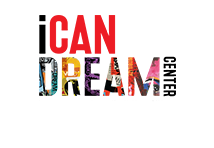
Unraveling the Enigma: Humor and Autism
Humor is often referred to as the universal language that transcends barriers, connecting people through laughter and shared experiences. However, the relationship between humor and autism has long been a subject of intrigue and exploration. Autism, a complex neurodevelopmental disorder, affects individuals’ social communication and interaction skills. While people with autism may perceive and interact with the world differently, their capacity for humor is as diverse and vibrant as anyone else’s. In this blog post, we delve into the intricate relationship between humor and autism, shedding light on its nuances, challenges, and the unique perspectives it offers.
Understanding Humor in the Context of Autism
Humor is a multifaceted phenomenon, encompassing various forms such as verbal jokes, visual gags, situational comedy, and wordplay. Individuals with autism may process these forms differently due to differences in sensory perception, social cognition, and language processing. For some, literal thinking can lead to difficulties grasping abstract or figurative language, which is common in humor. However, this doesn’t imply a lack of humor appreciation. Many individuals with autism have an exquisite sense of humor that often revolves around their unique perspectives on the world.
The Nuances of Humor Appreciation
1. Literal Humor: While some individuals may struggle with metaphors or puns, they often excel at understanding literal humor. This form of humor relies on straightforward interpretations and can be incredibly amusing to those who appreciate clear communication.
2. Niche Interests: Many people with autism develop intense interests in specific subjects. This can lead to a type of humor known as “special interest humor,” where jokes and references related to their interests become a source of genuine joy and amusement.
3. Visual and Physical Humor: Visual and physical comedy often transcend linguistic barriers. Slapstick comedy, exaggerated expressions, and visual gags can elicit genuine laughter, fostering connections even when verbal communication is challenging.
4. Timing and Routine: The sense of routine and timing that many individuals with autism possess can lend itself to a unique sense of humor. Repetitive actions or phrases can be transformed into comedic elements that others may find amusing as well.
Challenges and Opportunities
While individuals with autism have their distinct humorous perspectives, there are also challenges they might face in navigating social humor. Sarcasm, irony, and subtle emotional cues can be perplexing, often requiring explicit explanations for comprehension. Additionally, the unpredictability of social interactions can be overwhelming, as humor often relies on quick-witted responses and adaptability. Nevertheless, these challenges don’t negate the potential for individuals with autism to enjoy and create humor.
Fostering Inclusive Humor
1. Empathy and Understanding: Building bridges of empathy involves embracing diverse humor styles. Neurotypical individuals can take the initiative to understand and appreciate different forms of humor, fostering a sense of inclusion.
2. Creating Safe Spaces: Encouraging environments where individuals with autism feel comfortable expressing their unique humor can be empowering. This can lead to the development of social bonds and shared laughter.
3. Collaborative Creations: Collaborative projects that integrate the strengths of neurodiverse individuals can result in humor that’s innovative, refreshing, and appealing to a broad audience.
Humor is a universal thread that weaves through the fabric of human connection. The intersection of humor and autism is rich with diversity, offering a tapestry of perspectives and styles that enrich our collective sense of joy. By understanding, appreciating, and embracing the unique ways individuals with autism perceive and express humor, we can create a world where laughter knows no bounds and bridges are built through shared smiles.
